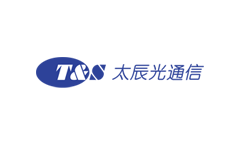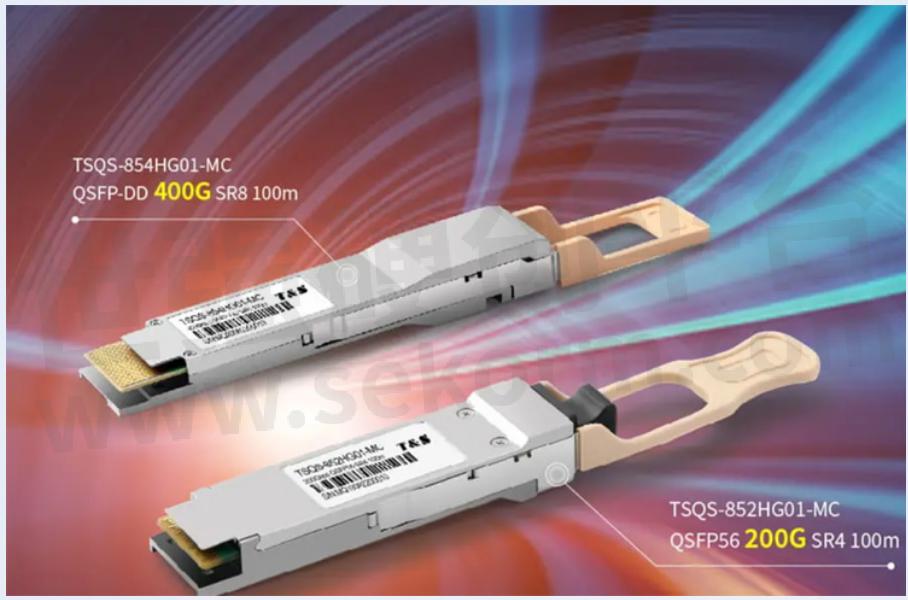Factors Influence High-Speed Transceiver Connection

Massive upgrades to data centers are being driven by spikes in network traffic. The components of a connection should work well together. In order to quickly transform electrical signals into optical signals and vice versa, high-speed transceivers are essential. When attempting to connect various transceiver types, users might run into problems. The top four elements that affect how high-speed transceivers connect will be discussed in this article.

1. Transmission Distance
The transmission range denotes the longest distance over which the Transceiver can send optical signals devoid of an amplifier or repeater. Within a data center or LAN, for example, the short-range optical Transceiver is typically made to transmit data over a distance of up to 300 meters. A long-range Transceiver could transmit data over distances of tens of kilometers, for example, across a MAN or WAN. T&S offers numerous high-speed transceiver options with various transmission ranges. According to your actual requirements, you can select the products that correspond to the transmission distance and application scenarios.

The TX and RX range must not be greater than the other end, and the wavelength must be the same, in order to connect two Transceivers with different transmission distances. Although they can theoretically connect since one is a 500m Transceiver and the other is a 2km Transceiver, a 100G DR Transceiver, and a 400G XDR4 Transceiver are typically not connected in this manner. Direct connections between optical Transceivers with various transmission distances are not possible.
The Transceiver's lifespan would be reduced by improper use brought on by variable transmission distances. The range of optical power input and output typically expands as transmission distance increases. Excessive TX output power has the potential to bypass the other Transceiver's detector. The component could fail as a result. A middle optical attenuator is necessary because the light from the long-range Transceiver could burn the short-range Transceiver.
Therefore, when connecting to a long-range Transceiver, the short-range Transceiver could be burned. In this situation, it is advised that you use an optical attenuator in the middle to avoid such a failure.
2. Wavelength
The term "wavelength" describes the particular frequency of light that is utilized for data transmission and reception. In nanometers (nm), it is measured at 850, 1310, and 1550 nm, as well as CWDM wavelengths of 1270–1610nm and DWDM wavelengths of 1525–1565 nm or 1570–1610 nm, are the most frequently used wavelengths.
Data travels from one end of a fiber link to the other. To guarantee conversion and transmission, optical Transceivers at both ends should support the same wavelength. A Transceiver at an 850nm wavelength could not connect and communicate with a Transceiver at a 1310nm wavelength. Wavelength mismatch could cause data loss during transmission.
There are several ways to determine the wavelength of your Transceivers. Consider the QSFP-DD 400G DR4 Transceiver as an illustration. Before making a purchase, you can browse the T&S website and check the label on the currently-used Transceiver. Additionally, if your optical Transceiver is capable of running DDM, you can check them immediately using SNMP.
3. Modulation
Modulation is the process of encoding digital data onto an optical signal that can be transmitted over fiber optic cables using an optical Transceiver. NRZ, PAM4, and QAM are the three types of modulation that are currently available.

In the 400G to 4x100G breakout application, 400G DR4 offers a breakout connection with 100G DR, 400G XDR4 can establish a breakout connection with 100G FR, and 400G PLR4 can establish a breakout connection with 100G LR. These Transceivers share the same modulation mode, transmission distance, and wavelength. The center wavelength, for instance, of the 100G DR Transceiver is 1310nm. Each of the four sets of waves in the 400G DR4 Transceiver is 1310 nm. For a 500m application, both DR and DR4 are appropriate. Since the transmission distance is equal, an MTP to 4xLC fiber patch cable can be used to set up a 4x100G breakout. Signal conversion transmission cannot be done by optical Transceivers with erratic signal modulation modes.
4. Form Factor
A transceiver's form factor is created to prevent damage to electronic components and to offer a standardized form factor that can be quickly installed and changed in a variety of equipment. The majority of T&S 100G transceivers are housed in QSFP28, while 400G transceivers are housed in QSFP112, OSFP, and QSFP-DD.
You must make sure that the equipment supports the optical Transceiver's appropriate form factor before putting it into the switch.

Applications
SWDM4 stands for Shortwave Wavelength Division Multiplexing, a four-wavelength version of SWDM. The QSFP transceiver multiplexes and demultiplexes these four wavelengths into a pair of multimode fibers (one fiber in each direction). In order to transmit 100G (4x25G) Ethernet over existing duplex multimode fiber using common LC connectors, each of the four wavelengths operates at 25G.
The NRZ modulated 100G SWDM4 BiDi Transceiver. A 50G PAM4 modulated Cisco 100G PAM4 BiDi Transceiver. Both Transceivers in the aforementioned figure can link up with the appropriate Transceiver. The situation in the third line merits attention, and you might wonder why. The modulation forms and wavelengths are different, as shown in the table below. The two Transceivers are unable to connect as a result.

In general, transmission distance, wavelength, modulation, and form factor have a significant impact on high-speed transceiver connections. The last two elements might vary in complicated circumstances. Two Transceivers with various modulations can connect, for instance, using an integrated gearbox chip that can convert the QSFP-DD NRZ to PAM4. However, in the majority of situations, transmission distance and wavelength are crucial.
You will choose appropriate Transceivers and make informed decisions according to this advice. T&S provides thorough 100G and 400G data center transceivers at affordable prices. Additionally, the T&S expert team offers expert technical assistance and services. Feel free to ask questions and receive a personalized response. Use T&S high-speed transceiver like a pro to get ready for a connection that works!
- +1 Like
- Add to Favorites
Recommend
- What Are the Components of Internet of Things?
- How to Plan the Future 5G Fiber Network?
- LC Duplex Fiber Optic Connectors for High Density Environments with the Features of High-reliability, Low-cost And High-density
- What Are the 40G QSFQ+ Fiber Optical Transceivers and Their Differences?
- The Difference Between Armored Jumper and Ordinary Fiber Optic Jumper
- What is Armored Fiber Optic Patch Cord and What Are the Characteristics?
- The Difference Between Fiber Patch Cord and Fiber Pigtail
- Nisshinbo starts producing the High-Speed Operational Amplifier NJM2725 with high-speed (160 MHz) and low noise (1.4 nV/√Hz)
This document is provided by Sekorm Platform for VIP exclusive service. The copyright is owned by Sekorm. Without authorization, any medias, websites or individual are not allowed to reprint. When authorizing the reprint, the link of www.sekorm.com must be indicated.














































































































































































































































































































































































































































































































































































































































































































































































































































